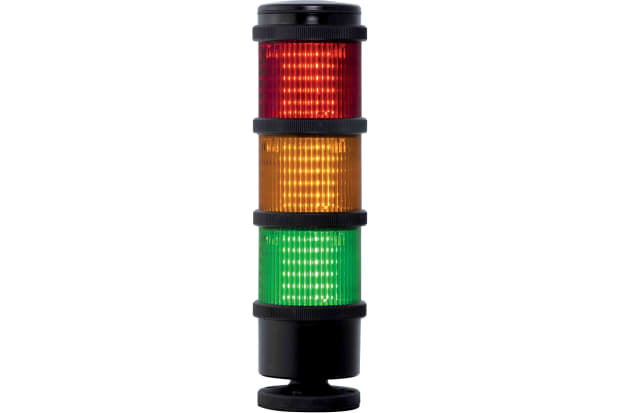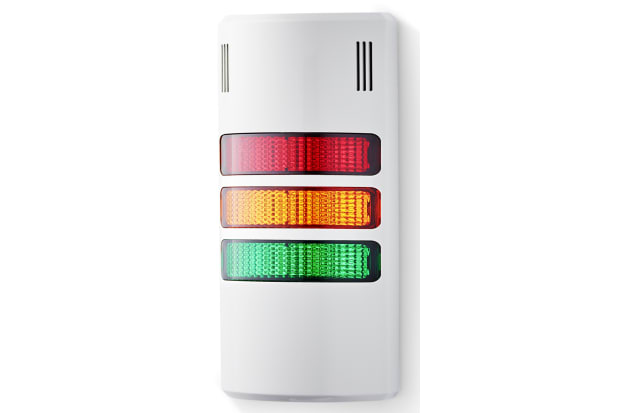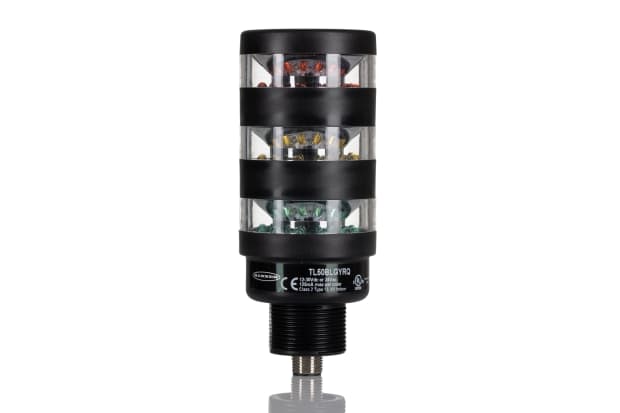- Published 9 Apr 2024
- Last Modified 9 Apr 2024
- 8 min
Choosing the Right LED Signal Tower: A Guide for Industrial Professionals
Learn types, applications, and considerations for industrial pros.

What are LED Signal Towers?
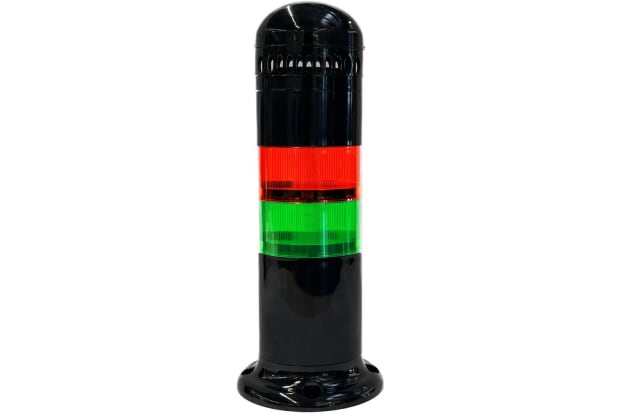
In the dynamic landscape of industrial settings, effective communication is paramount. LED Signal Towers play a crucial role in facilitating this communication by visually conveying important information across the factory floor. But what exactly are LED Signal Towers, and how do they contribute to the efficiency of industrial processes?
Understanding LED Signal Towers
LED Signal Towers are multi-coloured, stackable light assemblies designed to provide visual signals in manufacturing, logistics, and various industrial environments. These towers consist of modular sections, each equipped with high-intensity LED lights of different colours. The colours serve as a visual language, communicating specific messages to on-site personnel.
Composition and Structure
Typically constructed from robust materials such as polycarbonate or metal, LED Signal Towers are built to withstand the harsh conditions often found in industrial settings. The modular design allows for easy customization, with sections easily added or removed to create the desired signal sequence.
Visual Signalling
The primary function of LED Signal Towers is to convey information rapidly and unmistakably. Each colour in the tower represents a distinct signal. For instance, red may signify an emergency or stoppage, while green could indicate that a process is running smoothly. The towers can also incorporate audible signals, enhancing their effectiveness in busy environments.
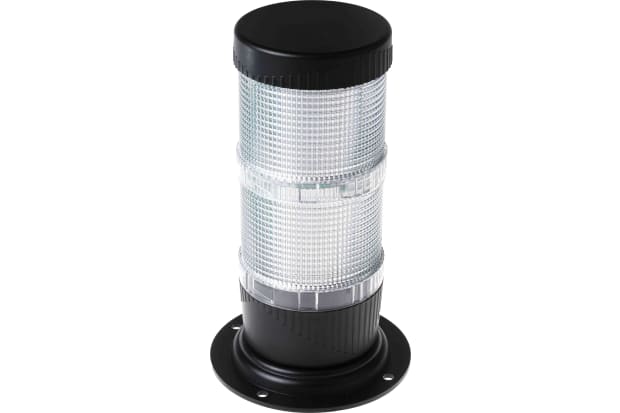
Importance in Industrial Environments
LED Signal Towers contribute significantly to workplace safety, operational efficiency, and process coordination. By providing clear and immediate visual cues, these towers help reduce response times, prevent errors, and enhance overall communication on the factory floor.
How do LED Signal Towers Work?
Understanding the inner workings of LED Signal Towers is essential for harnessing their potential in industrial environments. These dynamic devices operate on a simple yet effective principle, utilizing a combination of light and colour to convey information. Let's explore the mechanics behind the functionality of LED Signal Towers.
1. Light Source: LEDs (Light-Emitting Diodes)
LEDs serve as the fundamental components of LED Signal Towers. These semiconductor devices emit light when an electric current passes through them. Their efficiency, low energy consumption, and durability make LEDs ideal for industrial applications. Each section of the tower contains multiple LEDs, often of different colours.
2. Colour Differentiation
The key to the effectiveness of LED Signal Towers lies in their ability to produce different colours. This is achieved by using LEDs that emit specific wavelengths of light. Common colours include red, yellow, green, and blue, each associated with a distinct meaning or signal. The arrangement and sequence of these colours create a visual language that can be easily understood by workers on the factory floor.
3. Control and Sequencing
LED Signal Towers are equipped with control systems that govern the activation and sequencing of the lights. These systems allow for the creation of customized signal patterns and sequences to convey various messages. For example, a red light followed by a series of yellow lights might indicate a specific warning or attention requirement. The flexibility in sequencing enhances the adaptability of LED Signal Towers to different industrial scenarios.
4. Audible Components
In addition to visual signals, LED Signal Towers may include audible components, such as alarms or buzzers. These audible signals provide an additional layer of communication, especially in environments with high ambient noise levels. The combination of visual and audible alerts ensures that critical information is communicated effectively to all personnel in the vicinity.
5. Integration with Control Systems
LED Signal Towers can be seamlessly integrated into existing industrial control systems. This integration allows for automated responses to specific conditions or events. For instance, a tower could be programmed to activate in response to a machine malfunction or when a particular process is completed.
Different Types of LED Signal Towers
LED Signal Towers come in various types, each tailored to specific industrial needs and environments. The versatility of these signalling devices allows professionals to choose the right configuration for their applications. Let's explore the different types of LED Signal Towers available in the market.
1. Monochrome LED Signal Towers
These towers emit a single colour, making them suitable for applications where simplicity is key. Monochrome LED Signal Towers are often used for basic signalling purposes, such as indicating the status of a machine or alerting workers to a specific condition. Common colours include red for stoppages or emergencies, green for normal operation, and yellow for caution.
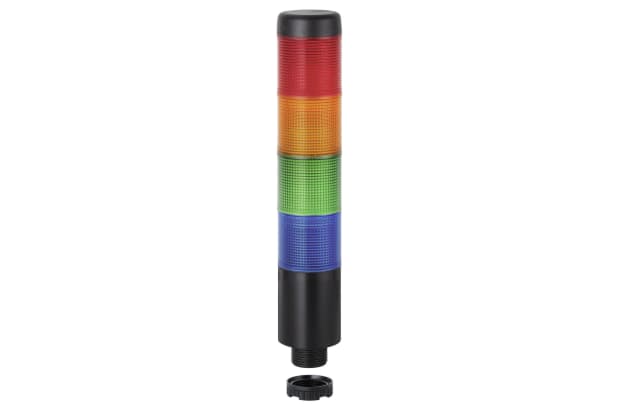
2. Multicolour LED Signal Towers
Multicolour towers offer a broader range of signalling options by incorporating multiple colours in a single device. This allows for more complex and detailed communication. For example, a multicolour tower can convey different levels of urgency, status, or specific instructions based on the combination and sequence of colours.
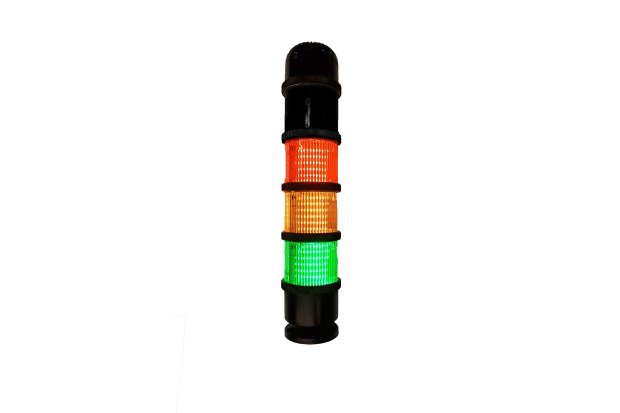
3. Modular LED Signal Towers
Modular towers provide flexibility in customisation. These towers consist of interchangeable sections, each housing a different colour or function. Users can stack and rearrange the sections to create a tailored signalling sequence. This adaptability is advantageous in situations where signalling requirements may change or expand over time.
4. Audible Signalling Towers
Some LED Signal Towers include integrated audible signalling components, such as alarms or buzzers. These towers are particularly useful in noisy environments where visual signals alone may not be sufficient. The combination of lights and sound ensures that important messages are conveyed effectively, even in challenging conditions.
5. Wireless and Remote-Controlled Towers
Wireless LED Signal Towers offer the convenience of remote control and monitoring. These towers can be controlled wirelessly, allowing users to change signal patterns or activate alerts from a distance. This feature is valuable in scenarios where manual control is impractical or when centralized control of multiple towers is needed.
6. Explosion-Proof LED Signal Towers
In hazardous environments where the risk of explosions exists, explosion-proof LED Signal Towers are crucial. These towers are designed to meet stringent safety standards and prevent the ignition of flammable gases or dust. They are commonly used in industries such as petrochemicals, oil and gas, and mining.
Common Applications for LED Signal Towers
The adaptability and functionality of LED Signal Towers make them indispensable across a wide range of industrial applications. These versatile signalling devices play a crucial role in enhancing safety, communication, and operational efficiency. Let's explore some common applications where LED Signal Towers prove to be valuable assets.
1. Machine Status Indication
In manufacturing environments, LED Signal Towers are often employed to communicate the status of machines. Different colours indicate whether a machine is operating normally, requires attention, or is in a critical state. This immediate visual feedback helps operators and maintenance personnel make informed decisions and respond promptly to issues.
2. Process Monitoring and Control
LED Signal Towers are extensively used in process industries to monitor and control various stages of production. By employing different colours and sequences, these towers convey information about the progress, status, and potential issues in different phases of a manufacturing process. This aids in maintaining quality standards and ensuring seamless workflow.
3. Safety Alerts and Emergency Signalling
One of the primary functions of LED Signal Towers is to convey safety alerts and emergency situations. The use of distinct colours like red for emergencies or stoppages ensures that workers can quickly identify and respond to critical situations. The integration of audible signals further enhances the visibility of emergency alerts in noisy environments.
4. Material Handling and Logistics
LED Signal Towers find applications in warehouses and logistics operations to streamline material handling processes. These towers can signal the availability of materials, the need for replenishment, or indicate specific loading and unloading instructions. The visual cues facilitate efficient coordination in fast-paced logistics environments.
5. Quality Control Stations
In quality control areas, LED Signal Towers are utilized to communicate inspection results and quality status. The towers can indicate whether a product has passed inspection, required rework, or needs further attention. This visual indication helps maintain quality standards and reduces the risk of defective products reaching the market.
Key Considerations for Choosing LED Signal Towers
Selecting the appropriate LED Signal Tower for your industrial application requires careful consideration of various factors. Here are key considerations to guide you in choosing the right tower for your specific needs:
1. Environmental Conditions
Assess the environmental conditions in which the LED Signal Tower will operate. If your workplace involves exposure to harsh elements, extreme temperatures, or hazardous materials, opt for towers with robust, weather-resistant, and explosion-proof features. Ensure the tower's construction materials can withstand the challenges posed by the work environment.
2. Signalling Requirements
Define your signalling requirements clearly. Different applications may demand specific colours, sequences, or audible signals. Choose a tower that allows for easy customization to meet your unique signalling needs. Whether it's indicating machine status, emergency alerts, or conveying process information, the tower should align with your communication goals.
3. Visibility and Intensity
Consider the visibility requirements of your workspace. Choose LED Signal Towers with sufficient intensity to be easily visible from various angles and distances. Adjustable brightness settings may be beneficial, allowing you to optimize visibility without causing discomfort to operators working in close proximity to the tower.
4. Audible Signalling
Evaluate the need for audible signalling in your environment. In noisy workplaces, LED Signal Towers with integrated buzzers or alarms can enhance communication. Ensure that the audible signals are distinguishable and not overshadowed by ambient noise. Additionally, choose towers with adjustable sound levels to suit different scenarios.
5. Integration with Control Systems
If your industrial processes involve automated systems, select LED Signal Towers that can seamlessly integrate with your existing control systems. This integration allows for synchronized signalling based on predetermined conditions, contributing to efficient and automated responses to events on the factory floor.
LED Signal Towers FAQ
Popular Brands
Browse related products from RS PRO
Browse related products from AUER Signal
Browse related products from Banner
Related links
- Signal Towers
- Unveiling the Essentials: A Comprehensive Guide to Isolators
- A Comprehensive Guide to Tachometers and Their Applications
- AUER Signal PC7MR Series Base for Use with Modul-Perfect 70 LED Signal Towers
- AUER Signal YMF Series Mounting Base for Use with ECOmodul60 LED Signal Towers, IP66
- AUER Signal PC7MV Series Base for Use with Modul-Perfect 70 LED Signal Towers
- AUER Signal PC7MP Series Base for Use with Modul-Perfect 70 LED Signal Towers
- AUER Signal PC7MW Series Base for Use with Modul-Perfect 70 LED Signal Towers
